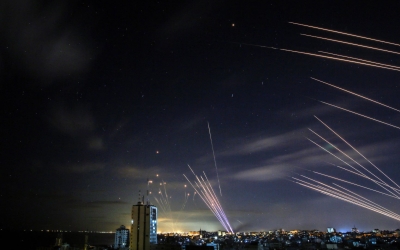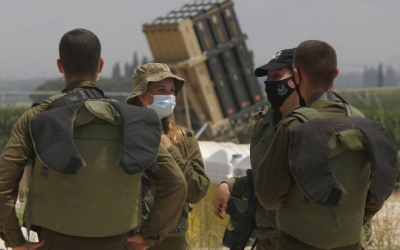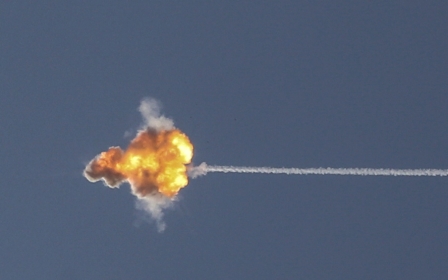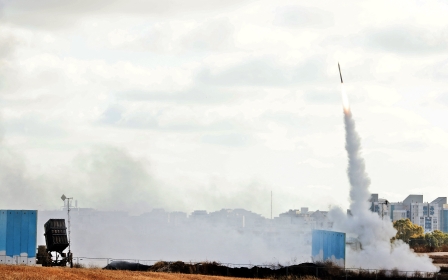US Iron Dome vote: A small dent in Washington’s unconditional aid to Israel
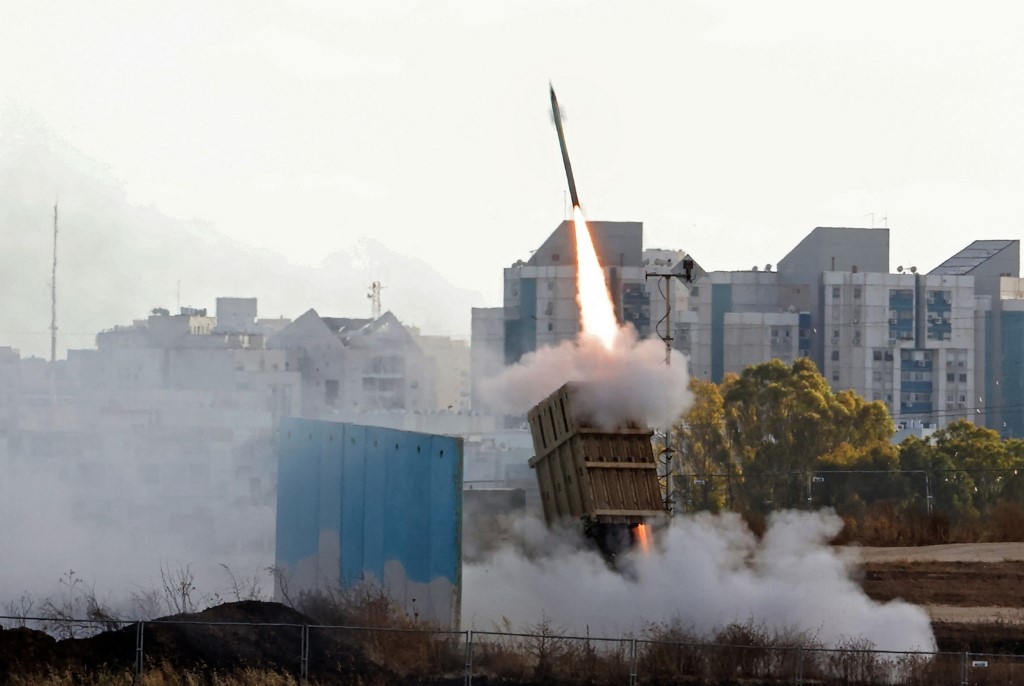
Iron Dome is one of Israel’s most famous military systems, a supposedly defensive missile system to intercept rockets from Gaza. Calling it a dome indicates how Israeli arms manufacturers wished to extend the concept of a fortified land to the sky.
Rockets fired from besieged Gaza proved that the Separation Wall isn’t sufficient to create a complete segregation between Israeli everyday life and the occupation, prompting a search for a technological solution: a missile defence system.
New MEE newsletter: Jerusalem Dispatch
Sign up to get the latest insights and analysis on Israel-Palestine, alongside Turkey Unpacked and other MEE newsletters
Although Iron Dome is portrayed as a purely defensive system, its strategic goal is to disarm Palestinians in Gaza from their only means of self-defence against Israeli bombing runs and a choking siege, and to enable the occupation to proceed unopposed.
Professor Emeritus Theodore Postol of MIT warned that Iron Dome is more hype than actual defence. He told Middle East Eye that “Claims of high Iron Dome performance by the Israeli government is a political ploy to produce an illusion for both the Israeli public and its Arab adversaries that the rocket attacks cannot kill or injure people or cause significant property damage. This is due to the rockets mostly having small warheads."
Costly system
Yet even if one takes the Israeli military at its word when they claim that Iron Dome has a 90 percent interception rate, it is economically an unsustainable system. It costs Hamas fighters in Gaza between $300 and $800 to build a Qassam rocket, and Hamas is able to fire thousands of these rockets into Israeli territory. Iron Dome must fire two intercepting missiles against each Qassam rocket, each costing $50,000-$100,000.
As long as the US agrees to cover the costs of replenishing the Iron Dome intercepting missiles after every Israeli assault on the Gaza Strip, the cost is not borne by Israeli taxpayers, but by Americans.
This makes the Iron Dome system only usable by the country which happens to be the largest recipient of military aid in the world: Israel. Following the Memorandum of Understanding which former President Obama imposed in 2016, the Iron Dome funding requires a special vote in the House, if it is not to be included in the annual $3.8bn aid package.
The Israeli company producing Iron Dome, Rafael, has been unsuccessful in exporting it to other countries. Rafael was hoping, however, that the US Army will buy Iron Dome batteries, and was sorely disappointed last month as the US Army decided against purchasing them.
Striking out Iron Dome
On Wednesday the progressive members of the Democratic Congress, the so-called “Squad” of congresswomen, managed to remove the funding to replenish the Iron Dome missiles from the spending bill, a sum of about $1bn. By threatening to vote against the spending bill altogether and bring government operations to a halt, progressive Democrats were able to get the Iron Dome funding stricken from the bill. Congresswoman Rashida Tlaib said: “We must stop enabling Israel’s human rights abuses and apartheid government.”
'Who is asking the key question: why does an industrialised nation like Israel need US aid or military support at all when it illegally occupies millions of Palestinians?'
- Antony Loewenstein
Antony Loewenstein, an independent journalist who is writing a book on how Israel's occupation has gone global, says that this decision to remove funding for Iron Dome is a small but welcome move. "What remains largely unrepresented in the US Congress are the voices calling to stop US aid entirely. Who is asking the key question: why does an industrialised nation like Israel need US aid or military support at all when it illegally occupies millions of Palestinians?
"US aid could be used as an effective weapon to pressure Israel to end its colonisation of the West Bank and Gaza, so I hope that this Iron Dome 'debate' is just the first step in that process."
The decision to cut the funding from the spending bill took the Israeli government by surprise. Israeli Foreign Minister Yair Lapid urged Steny Hoyer, the majority leader at the Congress, to approve the Iron Dome funding “as soon as possible”. Israeli newspaper Yedioth Ahronot called it an “embarrassment for Biden” (rather than an embarrassment for Israeli Prime Minister Naftali Bennett). Haaretz’s caricature depicted three members of “the Squad” – Alexandria Occasion Cortez, Ilhan Omar and Rashida Tlaib - using a rocket to intercept the Iron Dome missiles.
Israeli opposition used the disagreement within the Democratic party to attack Bennett, while Israeli coalition members blamed it on Netanyahu’s legacy. Both sides agreed that the delay in Iron Dome funding speaks to a worsening in the relations between the US and Israel, and Knesset member Nir Barkat even called “the Squad” a “strategic threat to Israel”.
The House quickly proposed a separate bill to approve the billion dollars to Israel for the Iron Dome missiles. The bill passed on Thursday at the House with a majority of 490 to nine, but the significance of this debate is not the billion dollars, nor the ability of the Israeli military to restock Iron Dome batteries.
Rather the protective dome which Israelis believe the US will forever hold above their heads no matter what the Israeli military does to Palestinians is showing signs of gradual collapse.
Middle East Eye delivers independent and unrivalled coverage and analysis of the Middle East, North Africa and beyond. To learn more about republishing this content and the associated fees, please fill out this form. More about MEE can be found here.



